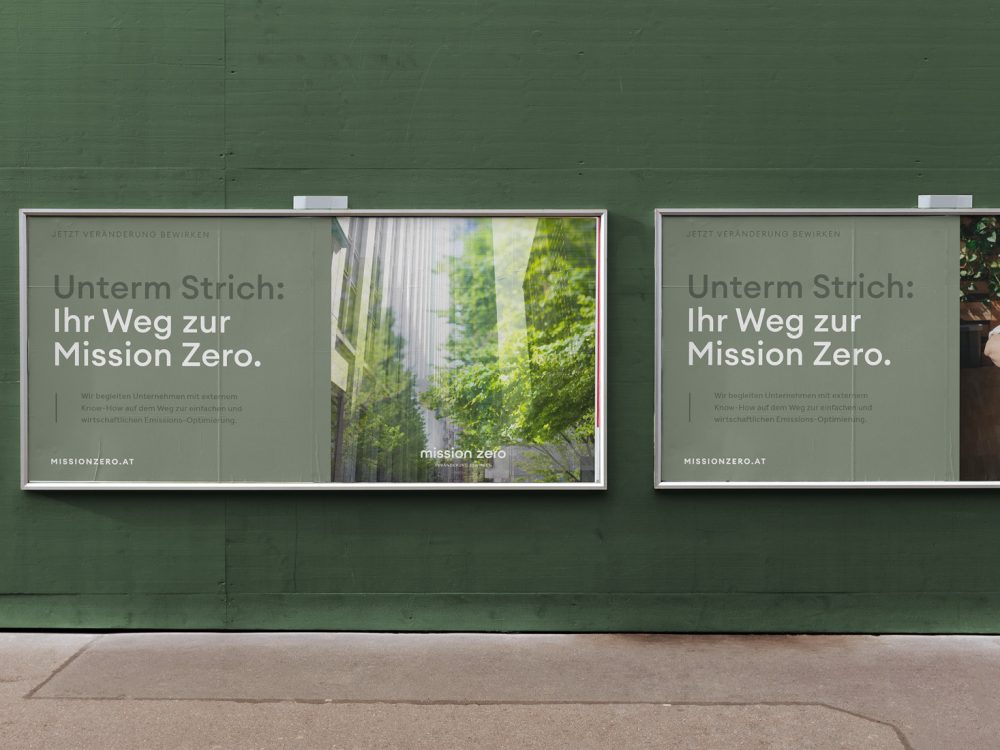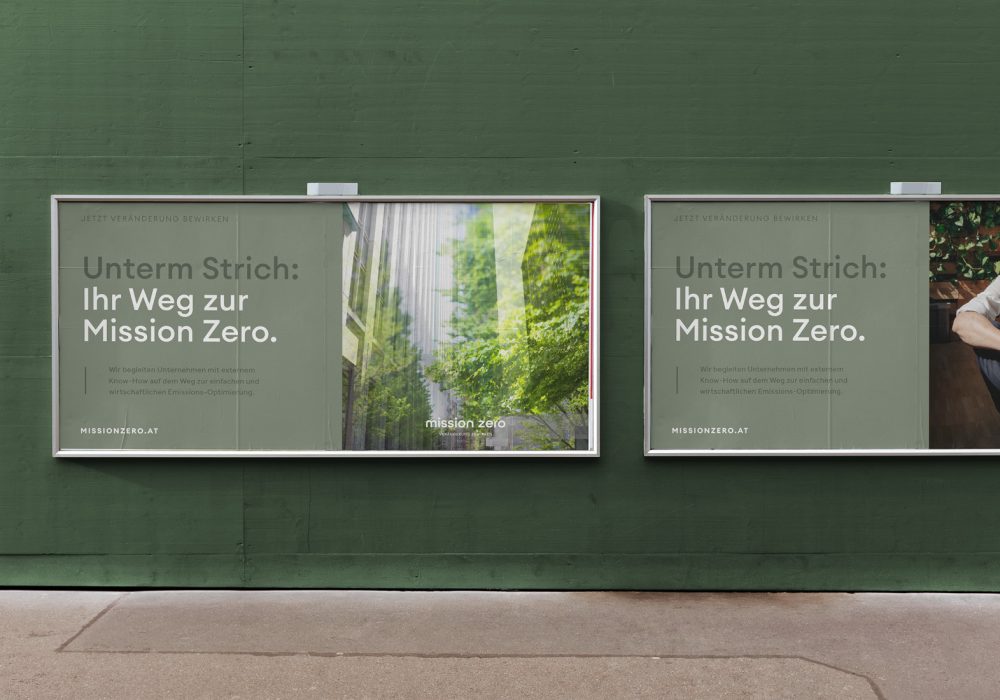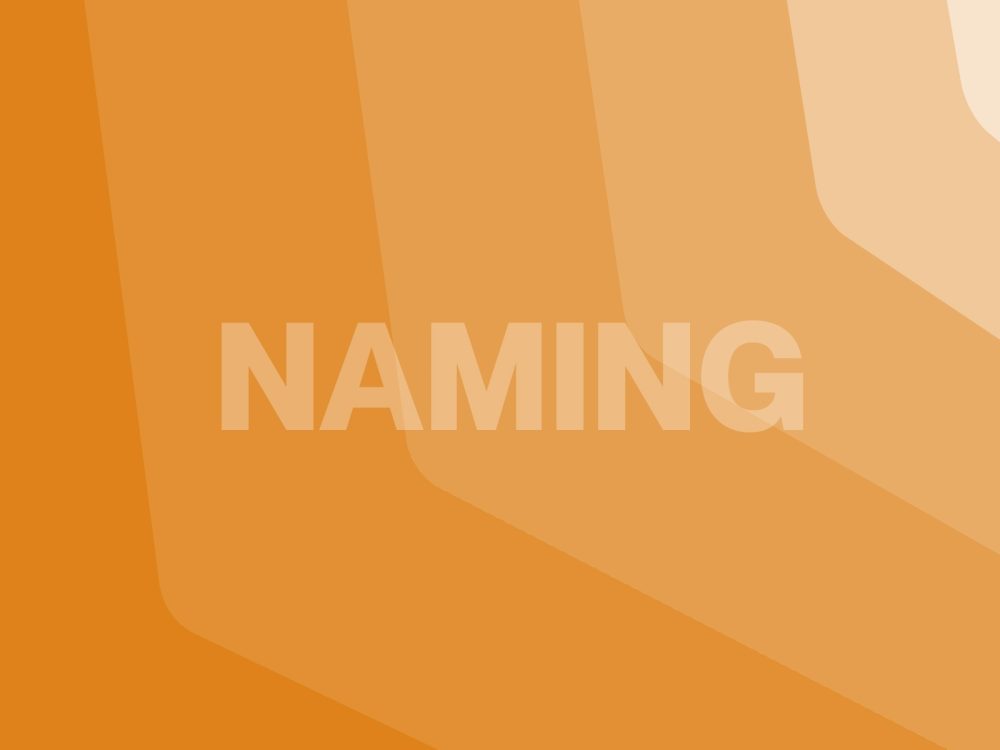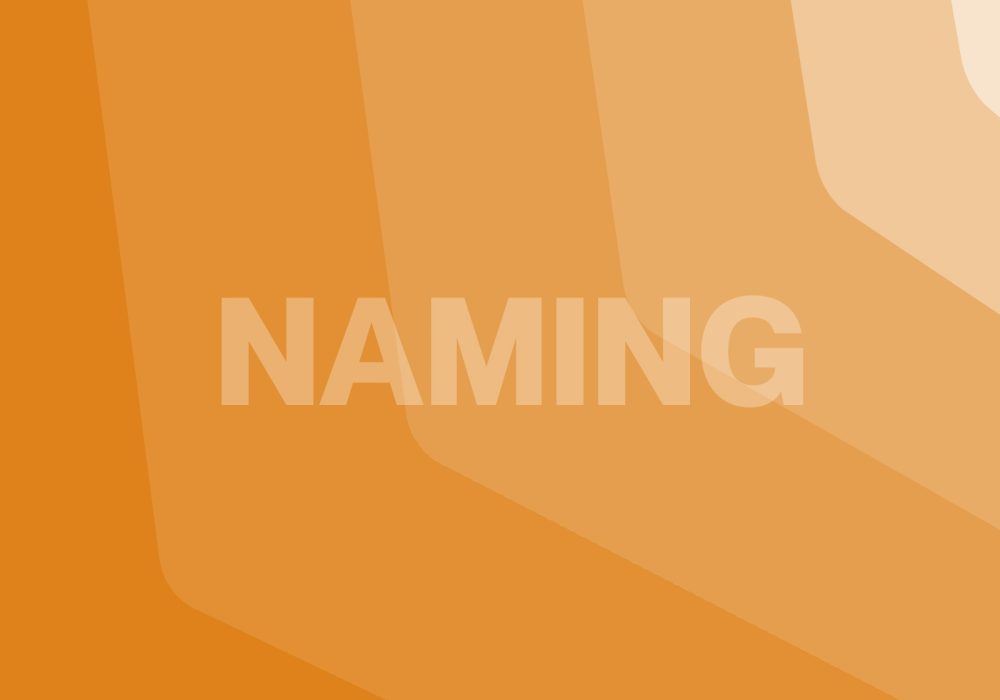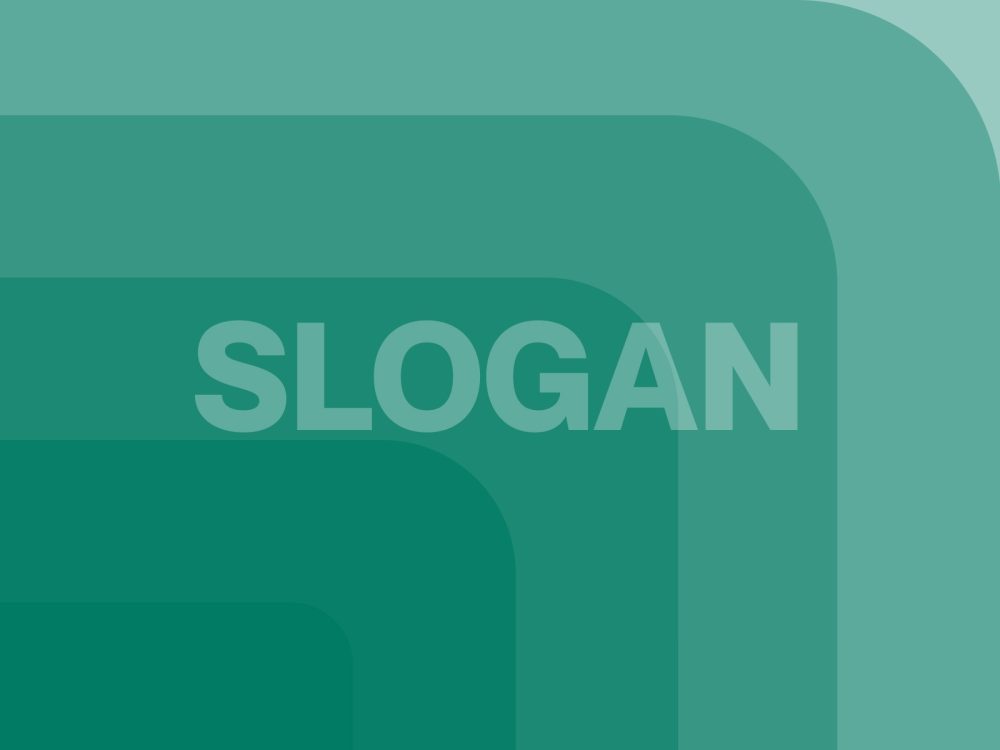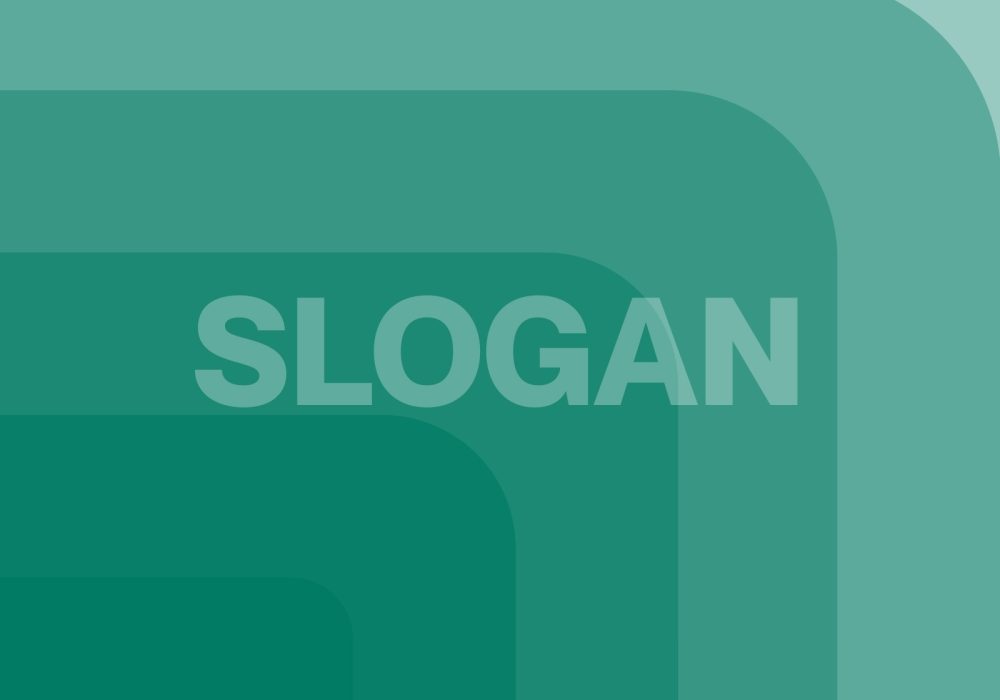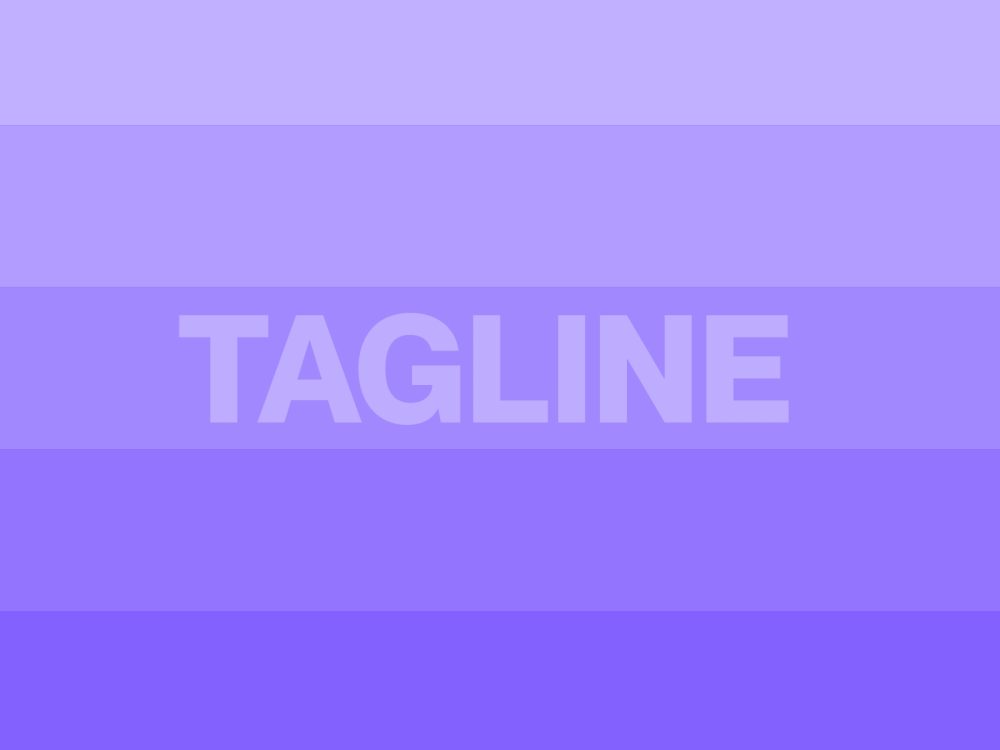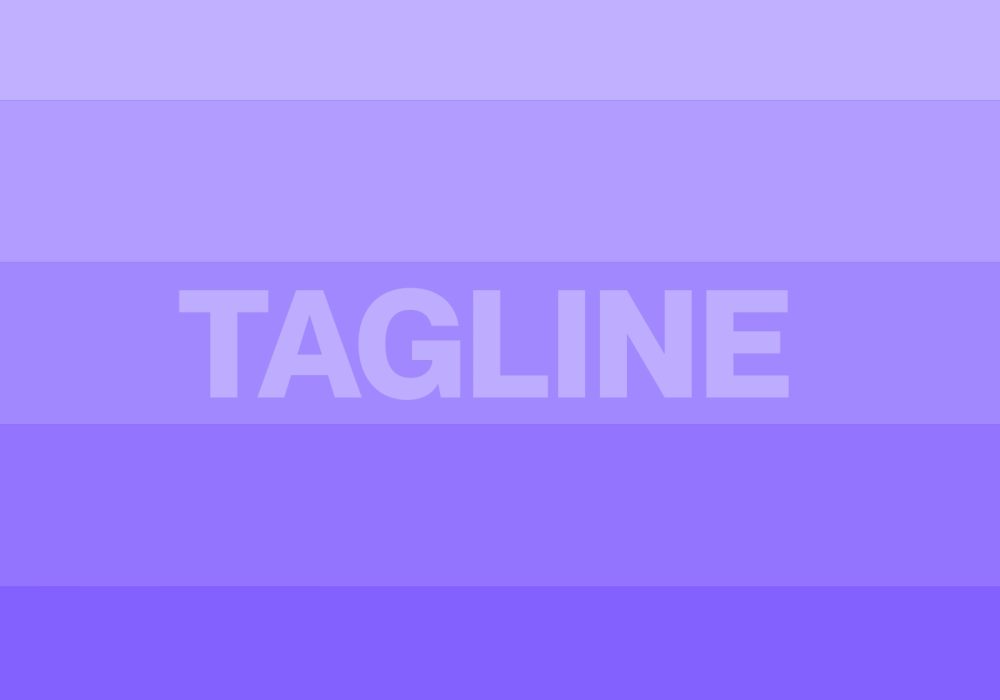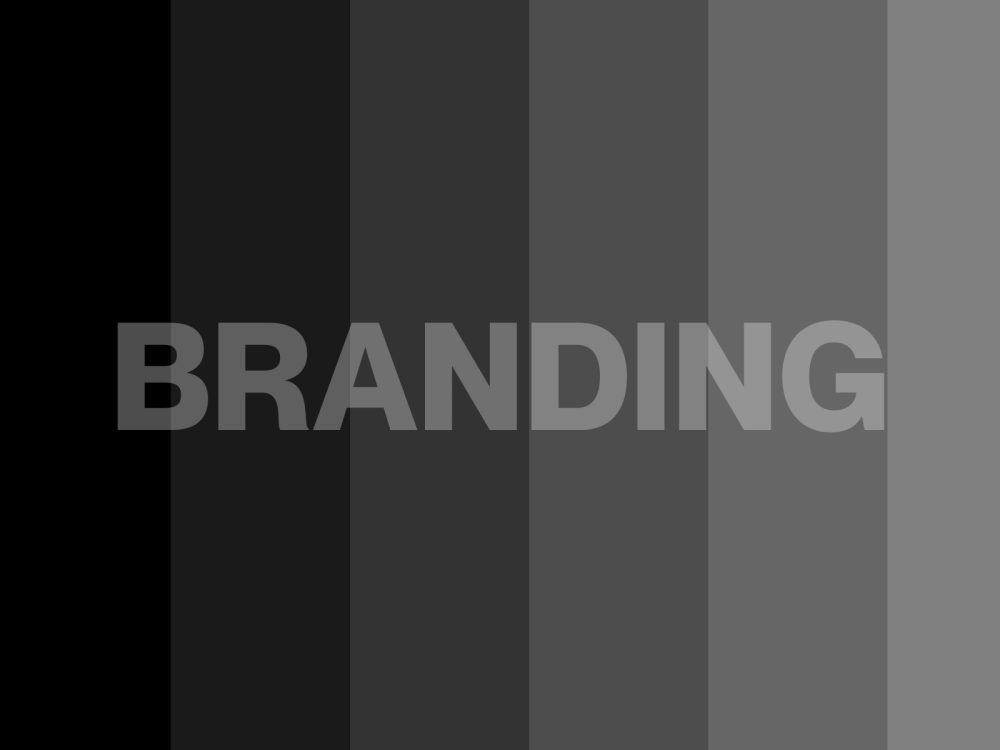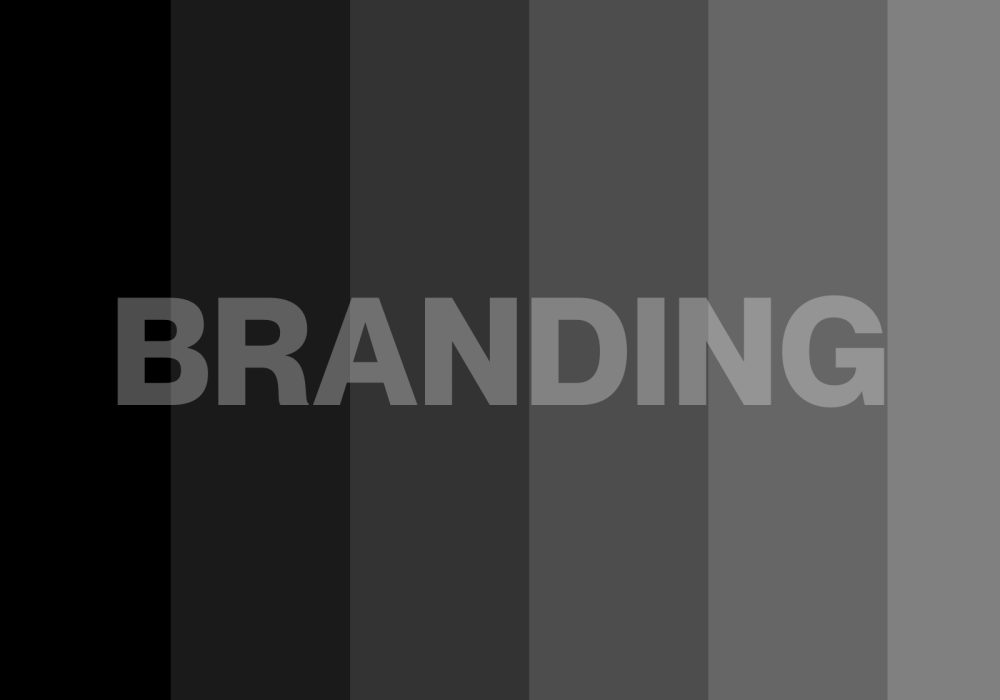There’s just something about the brands that we identify with. We have an affinity for them that is difficult to put into words. It is as if we knew them. In some cases, it’s like we love them.
What is it that draws us to these brands? Why do we include them in our family, or are faithful to them?
Is it great ad copy, great brand design, or some kind of gimmick?
The answer? Brand archetypes.
In this article, we’ll show you why archetypes are an essential part of any
branding
how to use them to hack into the minds of your target audience and create lasting connections.
Why do they work?
Although all brands are companies with which we have a transactional relationship (they give you something in exchange for your money), with some brands we feel attachment, loyalty, and in some cases even love.
The most popular brands connect with their audience on a deeper level than most brands, and those with an authentic brand purpose often win hearts. According to Netbase, Lego is the third most popular brand in Europe with 280,314 expressions of love in 2017. Check out Business Insider’s article for the full list of 21.
No doubt you have fond memories of at least one or two of them.
Maybe you’re attached to your Macbook, your Air Max, or your Heinz Baked Beans.
It’s probably none of the above, but I’ll bet you my last can of beans that you have a connection to a brand where the alternative just doesn’t work.
Almost all brands you feel such an attachment to are aligned with an archetype based on decades of psychological research and rooted in Greek mythology.
Psychologist Carl Jung, who coined the term in the early 20th century, was in good company. However, Carl and Sigmund later fell out.
History
This article is not intended to be a historical guide, but their history shows that they are not a fad.
Archetypes are as old as the art of storytelling itself.
The Greek philosopher Plato, who was hanging around Athens in 348 BC, explored the idea of archetypes when he spoke of “forms of intuition” as templates of intuitive understanding.
The Swiss psychiatrist Carl Jung coined the term “archetypes” in connection with personality. He said we all have a “collective unconscious” that channels experiences and emotions, leading to typical patterns of behavior.
In other words: We are born with the same instincts and the same unconscious understanding of behavior patterns, and we recognize them when we see them.
In their 2001 book, The Hero and the Outlaw: Building Extraordinary Brands Through the Power of Archetypes, Margaret Mark and Carol S. Pearson state, “Archetypes are the heartbeat of a brand because they convey meaning that makes customers connect with a product as if it were alive in some way, they relate to it and care about it.”
You are currently viewing a placeholder content from YouTube. To access the actual content, click the button below. Please note that doing so will share data with third-party providers.
More InformationThe 12 arch types at a glance
Below is an overview of all 12 archetypes, each with an explanation and real-world examples from established brands.
Outlaw
The Outlaw has a desire for revolution, partly to change the world for the better, and partly because of the anarchy it would bring. They despise rules, regulations and conformity that would deprive them (or others) of any form of freedom of choice. At their core, they are good, but anger is part of their motivation, which can become the dominant force. Without a fight, they are lost.
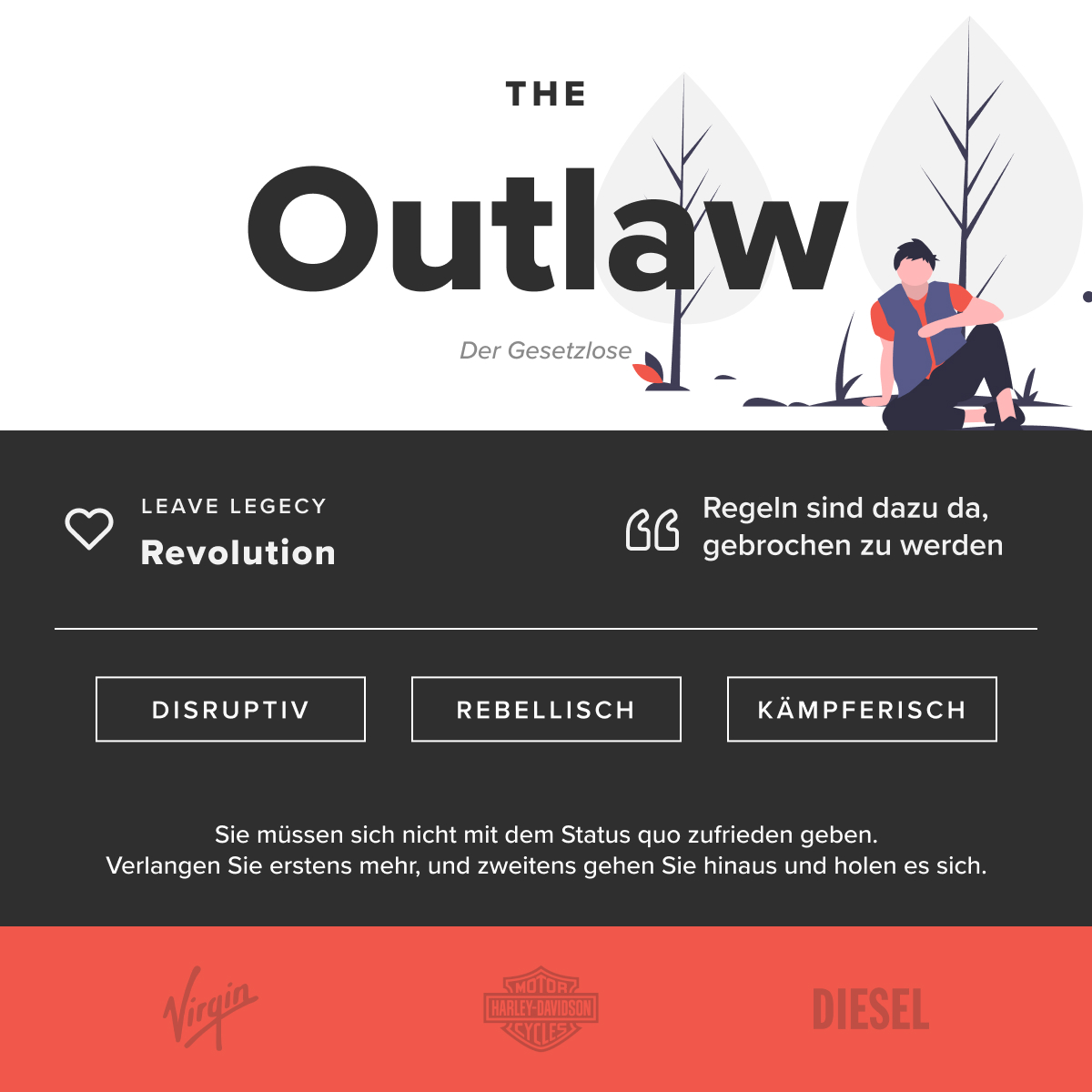
Magician
The magician strives to make dreams come true in a mystical way. They have the ability to take people on a journey of transformation through the experience of a magical moment. They believe that we are limited only by our imagination and defy the common belief in the laws of reality to lead us to a better future. Magicians are thirsty for knowledge, even if they do not share their knowledge willingly, but use it to show their vision.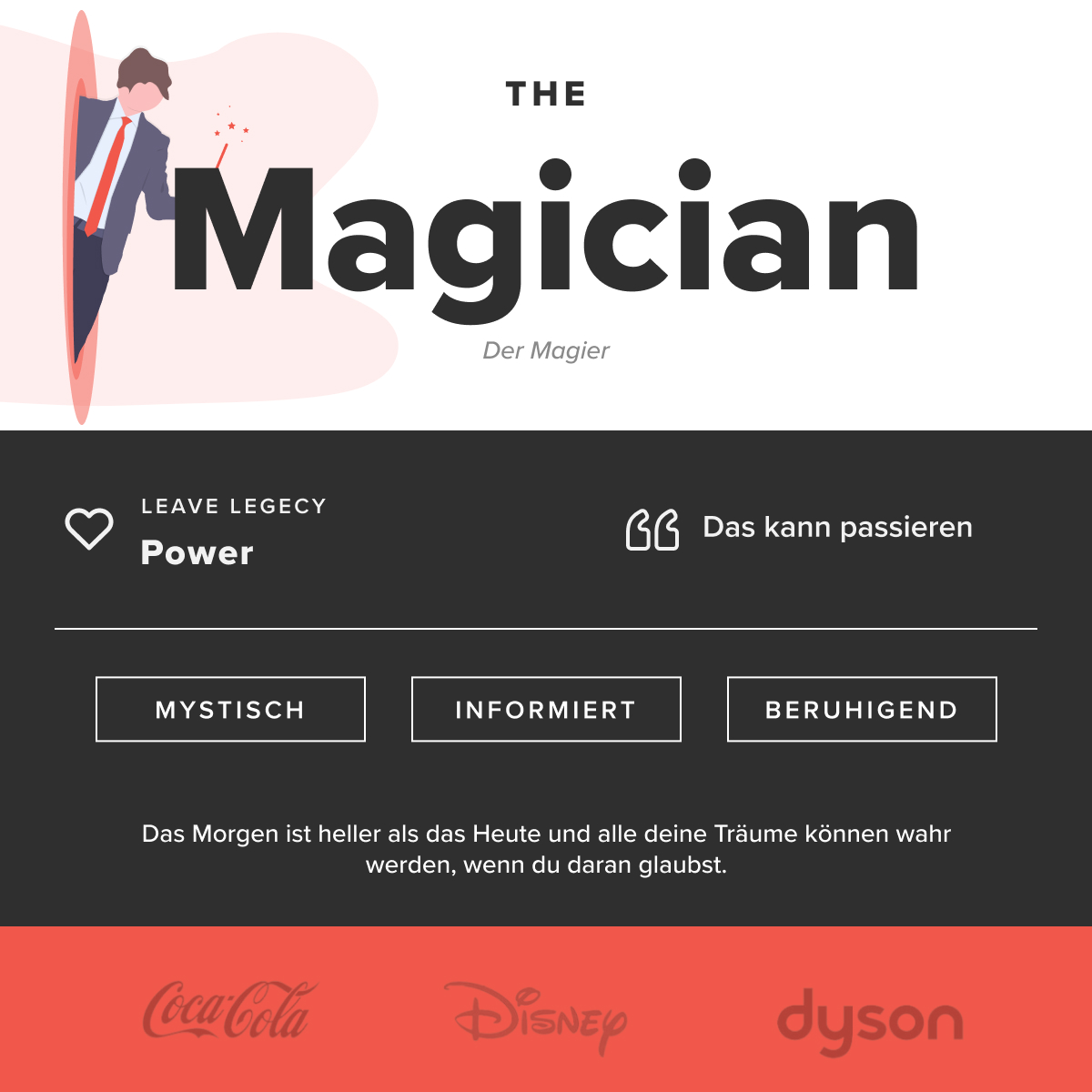
Hero
The main motivation of the heroes is to prove their worth through courage and determination.They work hard to gain the skills they feel they need and take pride in the fact that their work rate sets them apart from the rest.They have to face challenges and endure defeats or failures until they are resolved.The hero wants to save the day to prove himself, but also for the world to know about his abilities.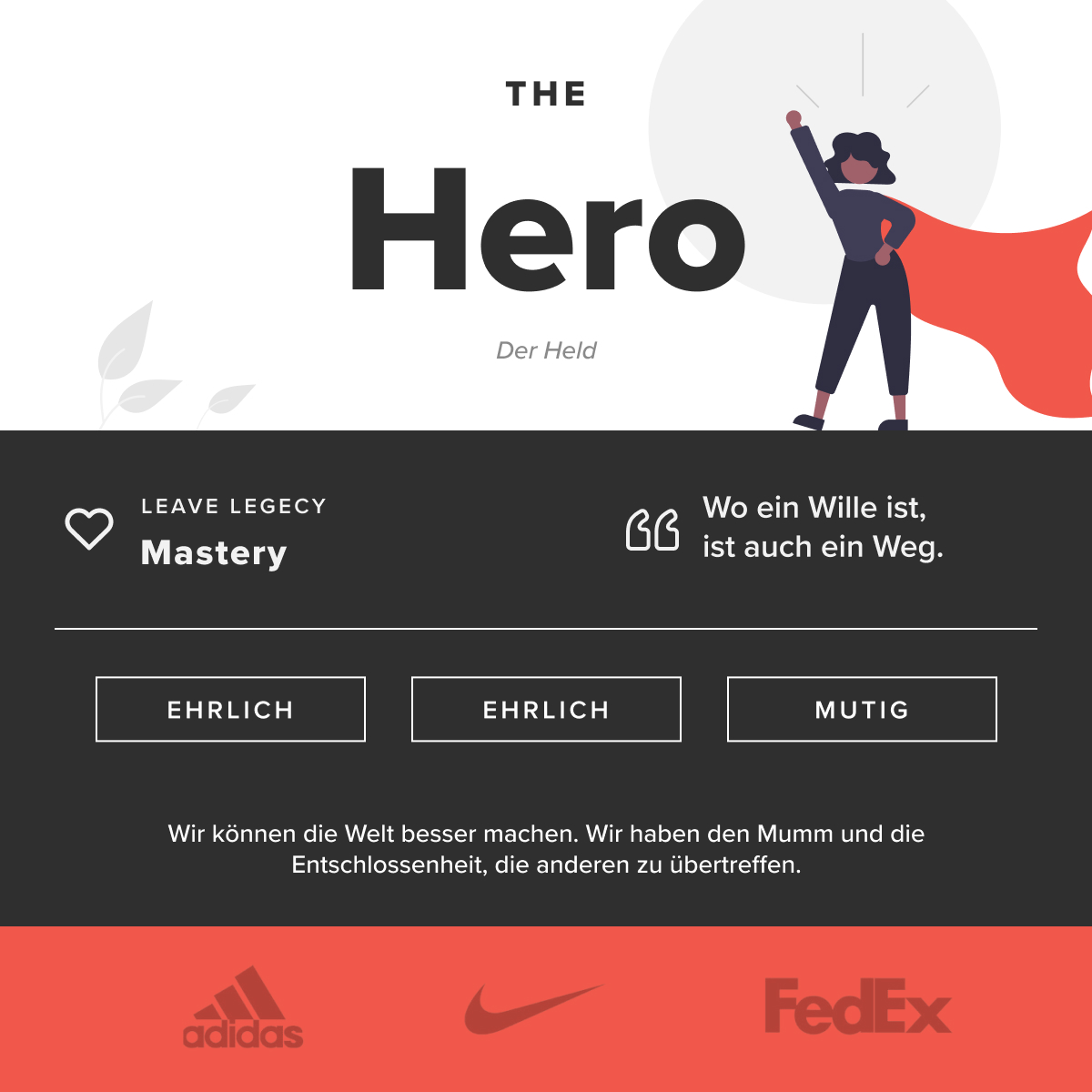
Lover
The lover wants to be desired. The experience of intimacy, closeness and sensual pleasure is what the lover seeks and he/she will use all means to achieve it. They are motivated to become more physically and emotionally attractive to increase their appeal to others.
They fear being unnoticed, unloved, and unwanted, and because their passionate desire clouds their judgment, they are easily led astray. Even when lovers fulfill all their wishes, they are still afraid of loss.
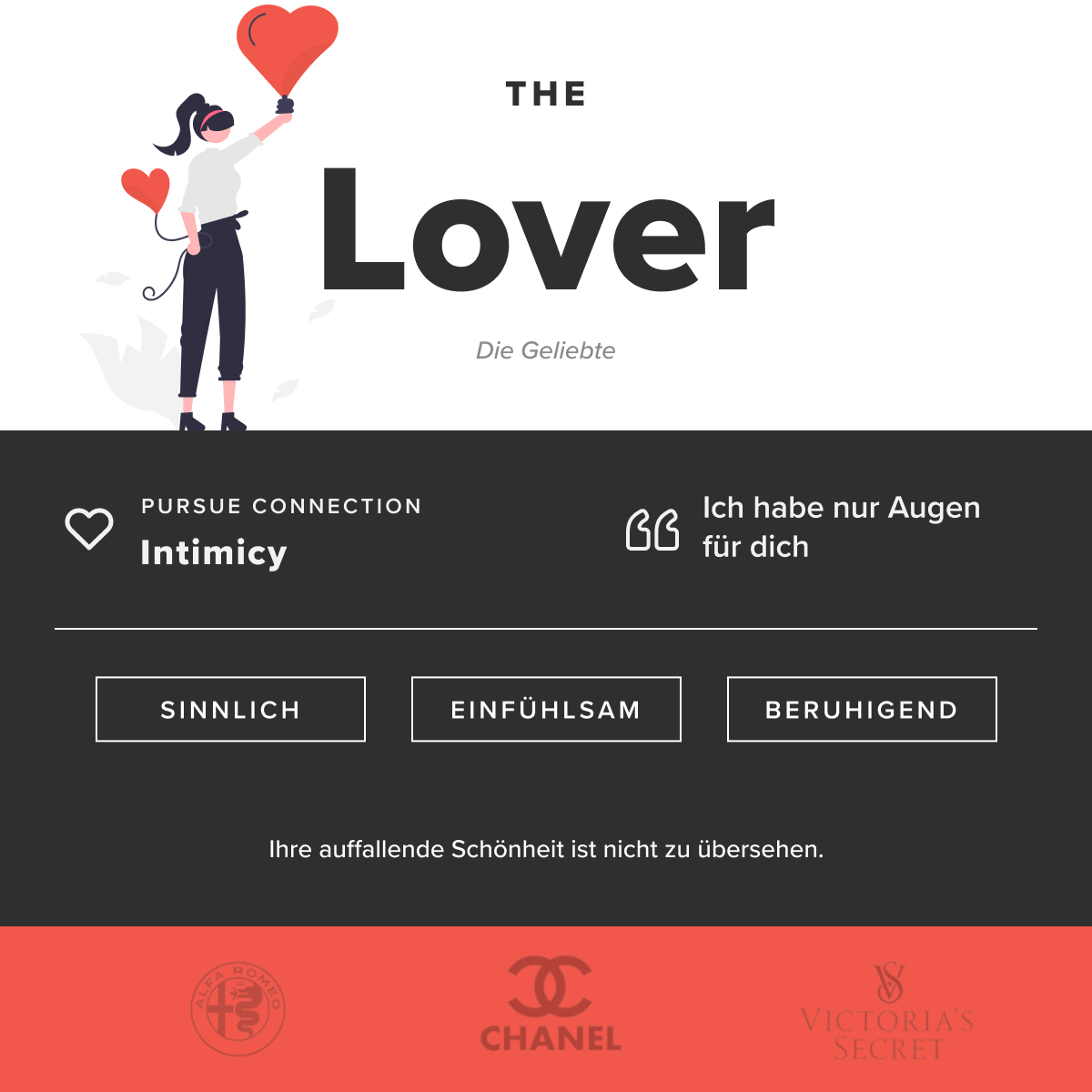
Jester
The Jester is about having fun and living life in the moment. Not only do they love to have fun themselves, but they also see it as their duty to be a ray of sunshine in the lives of those around them.
They are optimists and don’t let it get them down for long because they can see the good in any situation. Fools remain young at heart and retain their childlike nature long after their friends have grown up and become serious.
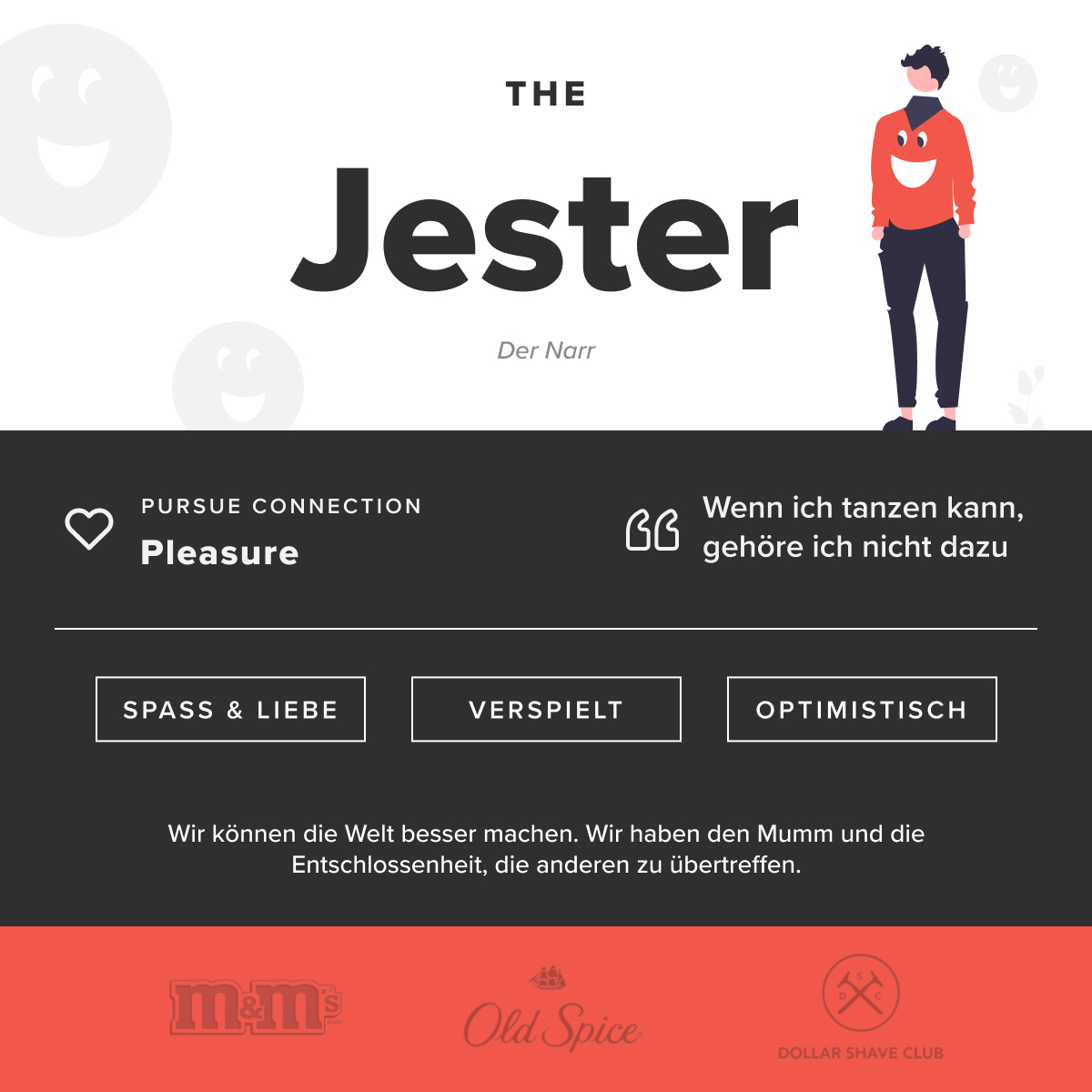
Everyman
Above all, the Everyman simply wants to belong. They tend to blend into society as an “everyman” and don’t want to stand out from the crowd. They are friendly and talkative without being overly funny, rude or loud.
They easily give their trust even though they are afraid of being rejected. They have a relatively positive attitude and make an effort to fit into the group. They tend to like most things without being overly enthusiastic about any one thing. The Everyman can be very popular, but it can also be easily forgotten.
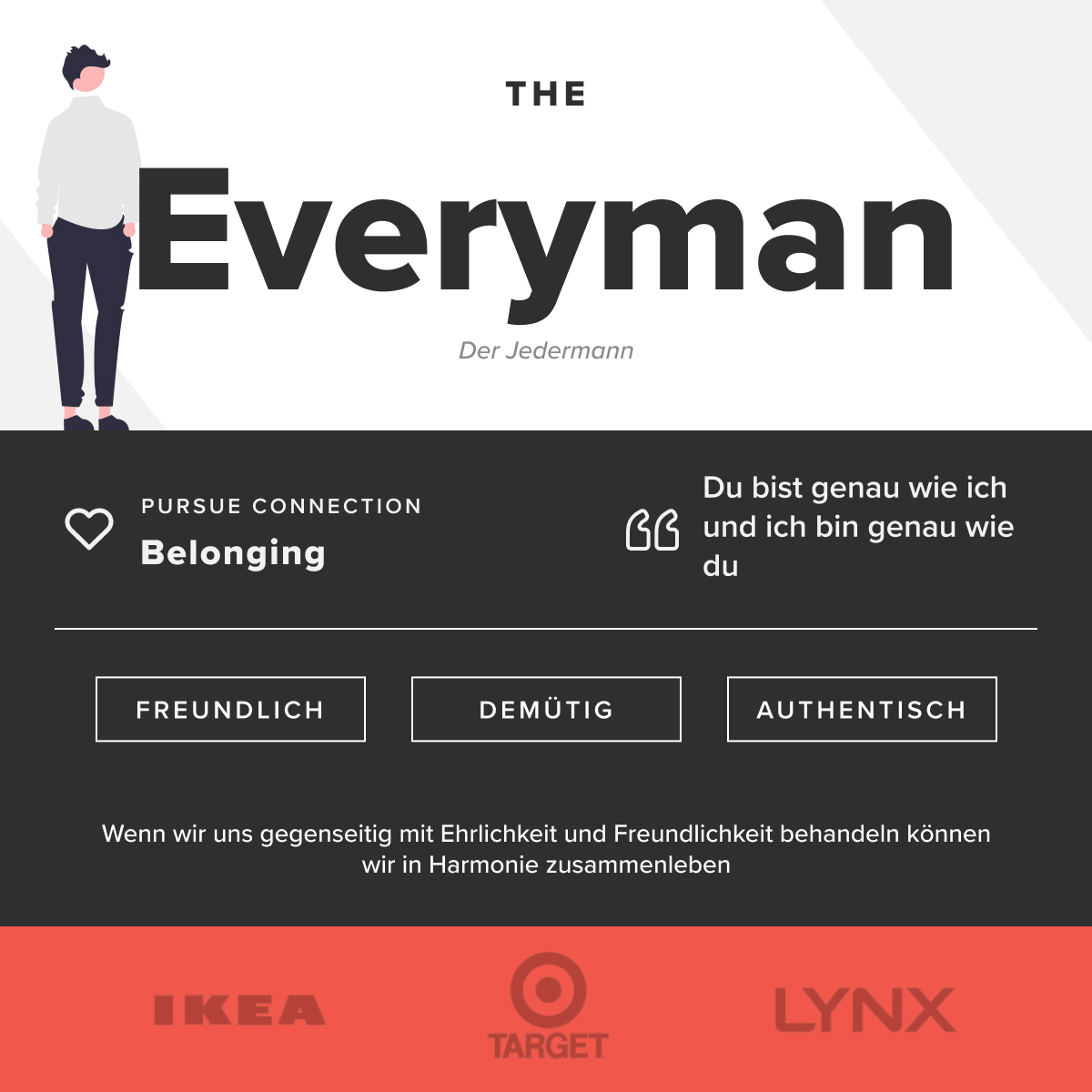
Caregiver
The Caregiver is a selfless personality driven by a desire to protect and care for others, especially those in need. They are often mother figures, taking those in need of care under their wing until they are stronger to care for themselves.
This personality is perfectly embodied by the nursing profession. Although they like their efforts to be recognized, they do not like being patronized. Caregivers are not only reactive but also preventive and tend to be there before or after a loss event.
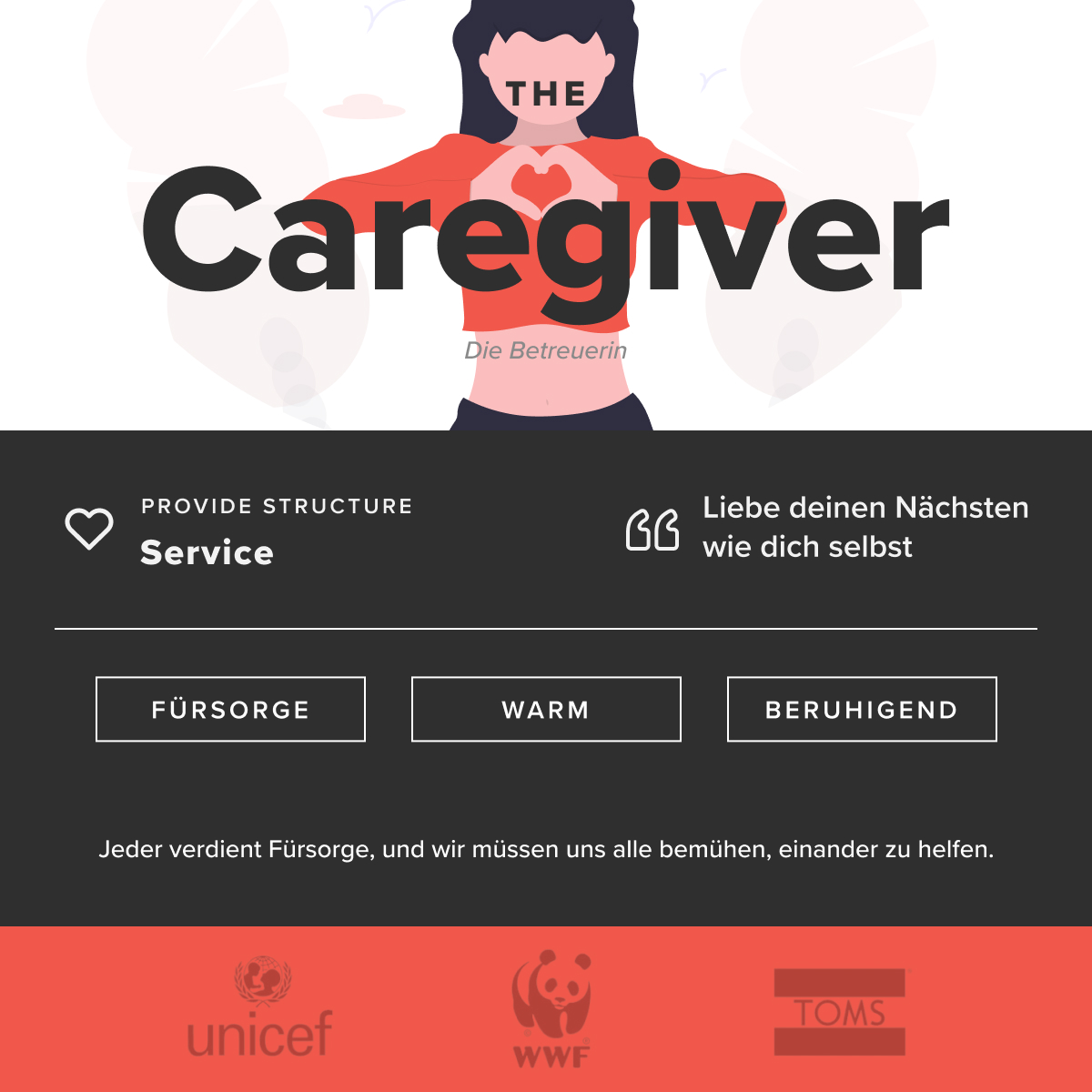
Ruler
The ruler or dominator strives for control above all else and is a dominant personality. They are authoritarian in their communication and actions and have a sense of intimidation. Their goal is to achieve prosperity and success and to pass this prosperity on to those who are loyal to their rule. They are self-confident, responsible and in control of their lives and expect the same from others. Rulers see themselves at the top of the food chain and aggressively defend this position.
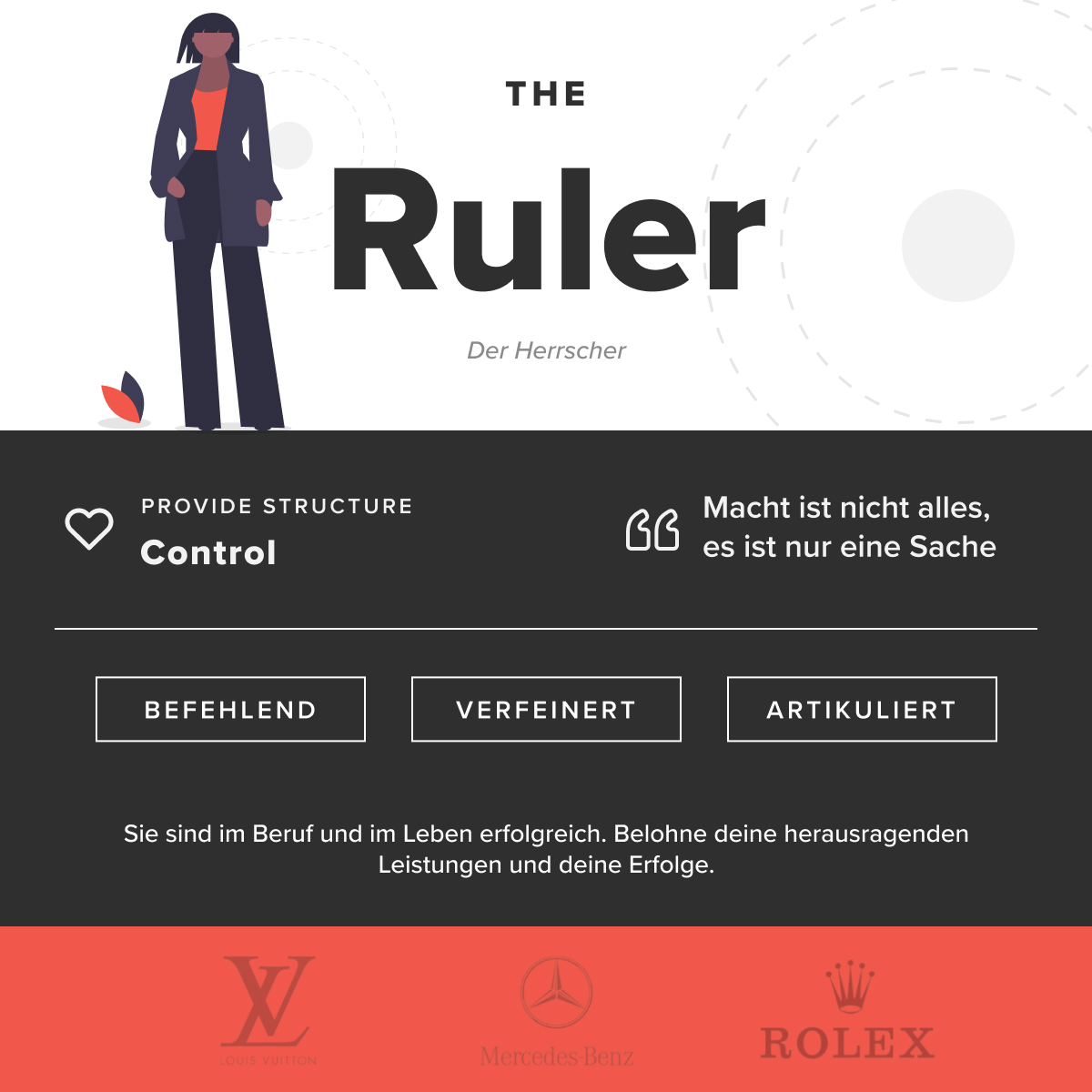
Creator
The creator has the desire to create something new and extraordinary, which has not existed before and has a lasting value. They must express themselves with their individual talent and strive to bring their vision to life through that expression. Creators believe that you can create something if you just imagine it, but they are often thwarted by their own desire for perfection.
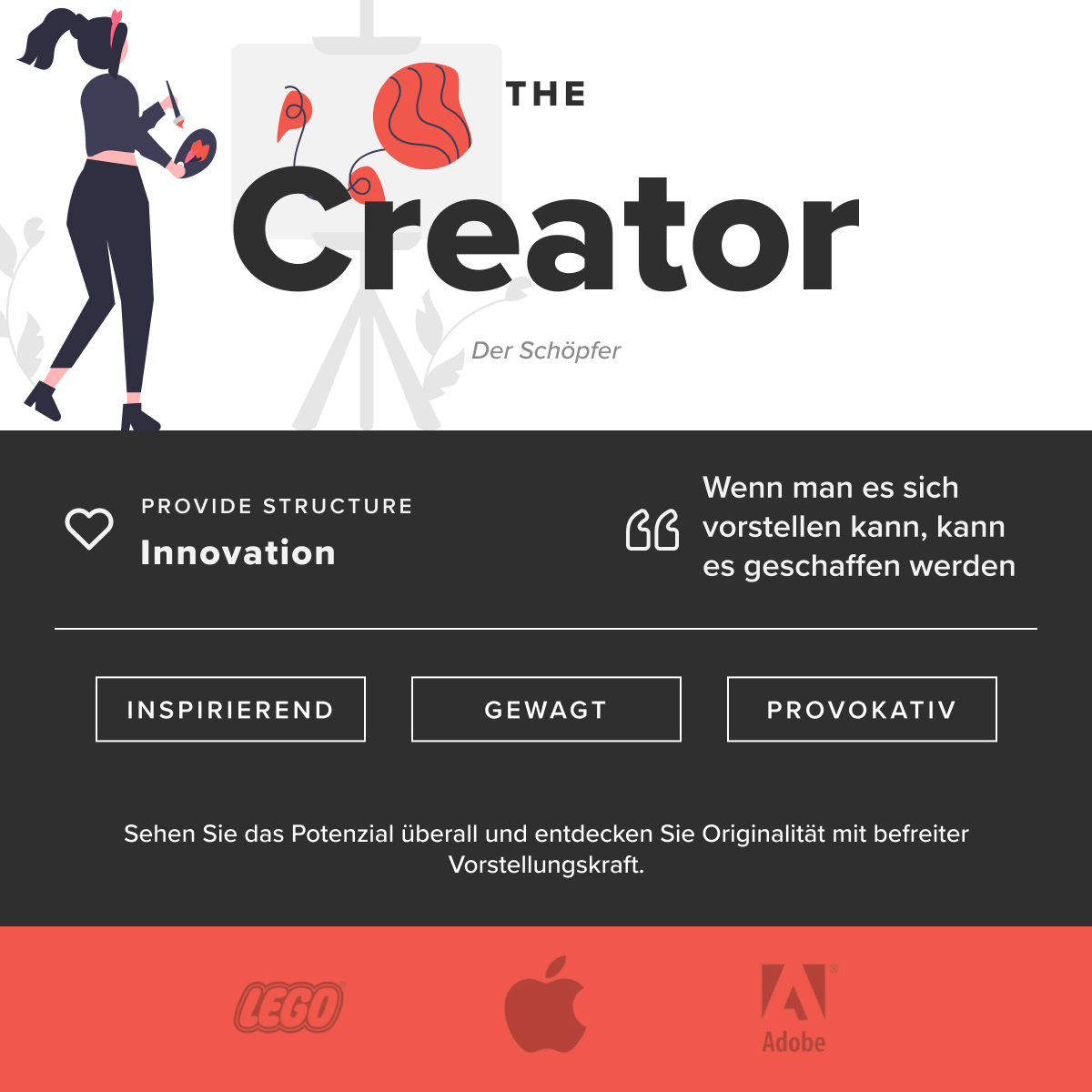
Innocent
The Innocent is a positive personality with an optimistic outlook on life. They crave security, but ultimately they want themselves and everyone else to be happy.
They are honest and pure and hold no grudges against anyone. They hold no grudges and believe that everyone has the divine right to be who they really are.
They see the beauty in everyone and have a gift for seeing the inner beauty that others do not see.
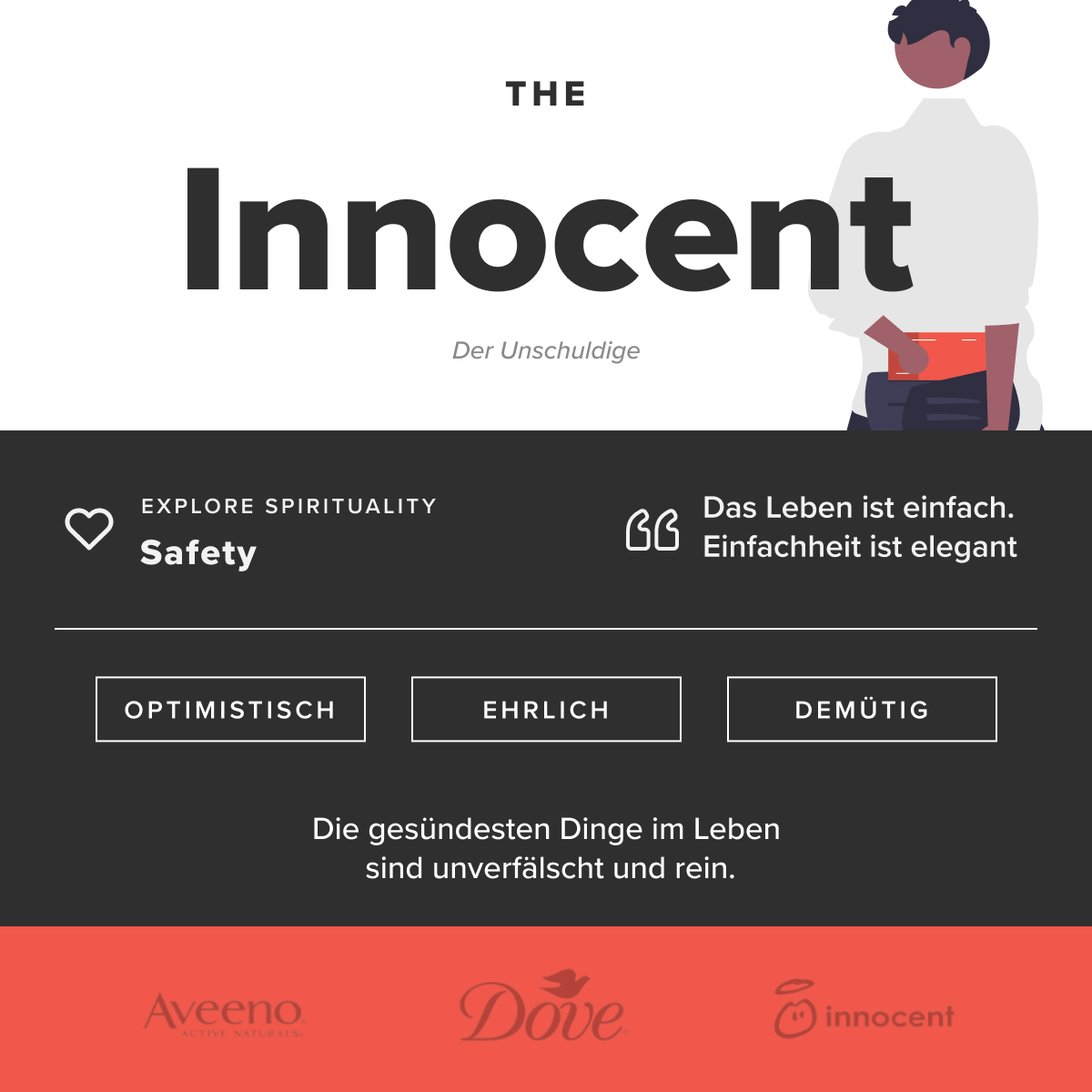
Sage
A sage is a seeker of truth, knowledge and wisdom. Their drive is the desire not only to understand the world, but also to share this knowledge with others. They are lifelong learners and enjoy expressing their knowledge in philosophical conversations. They are more likely to pass on their wisdom to someone who can change the world with it than they are to change the world with it themselves.
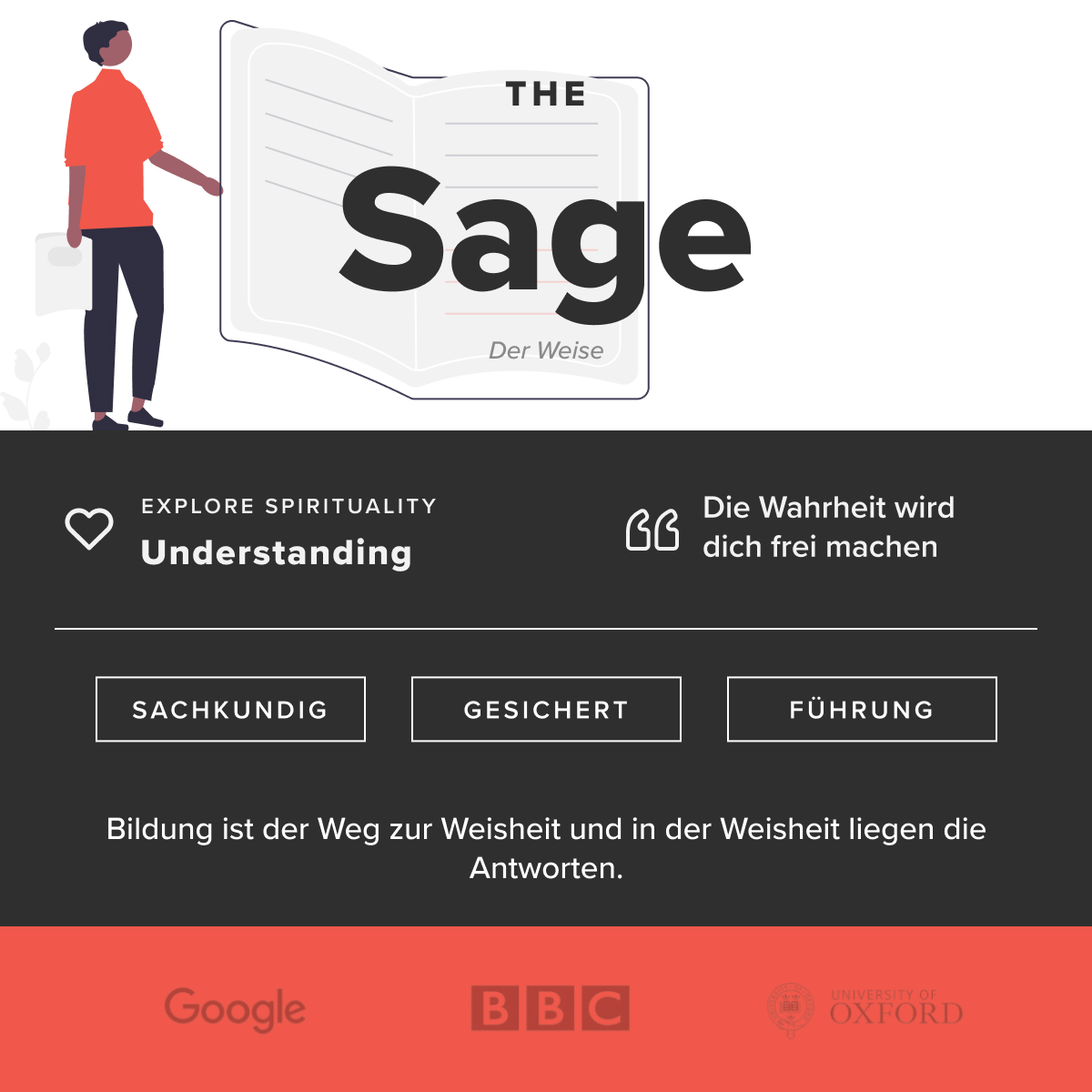
Explorer
The explorer has a palpable inner urge to step out of the comfort and conformity of everyday life and into the harsh environment where he feels at home. They are brave, adventurous and love a challenge. The challenges are more about understanding themselves than proving anything to others, and they are on a perpetual journey of discovery.
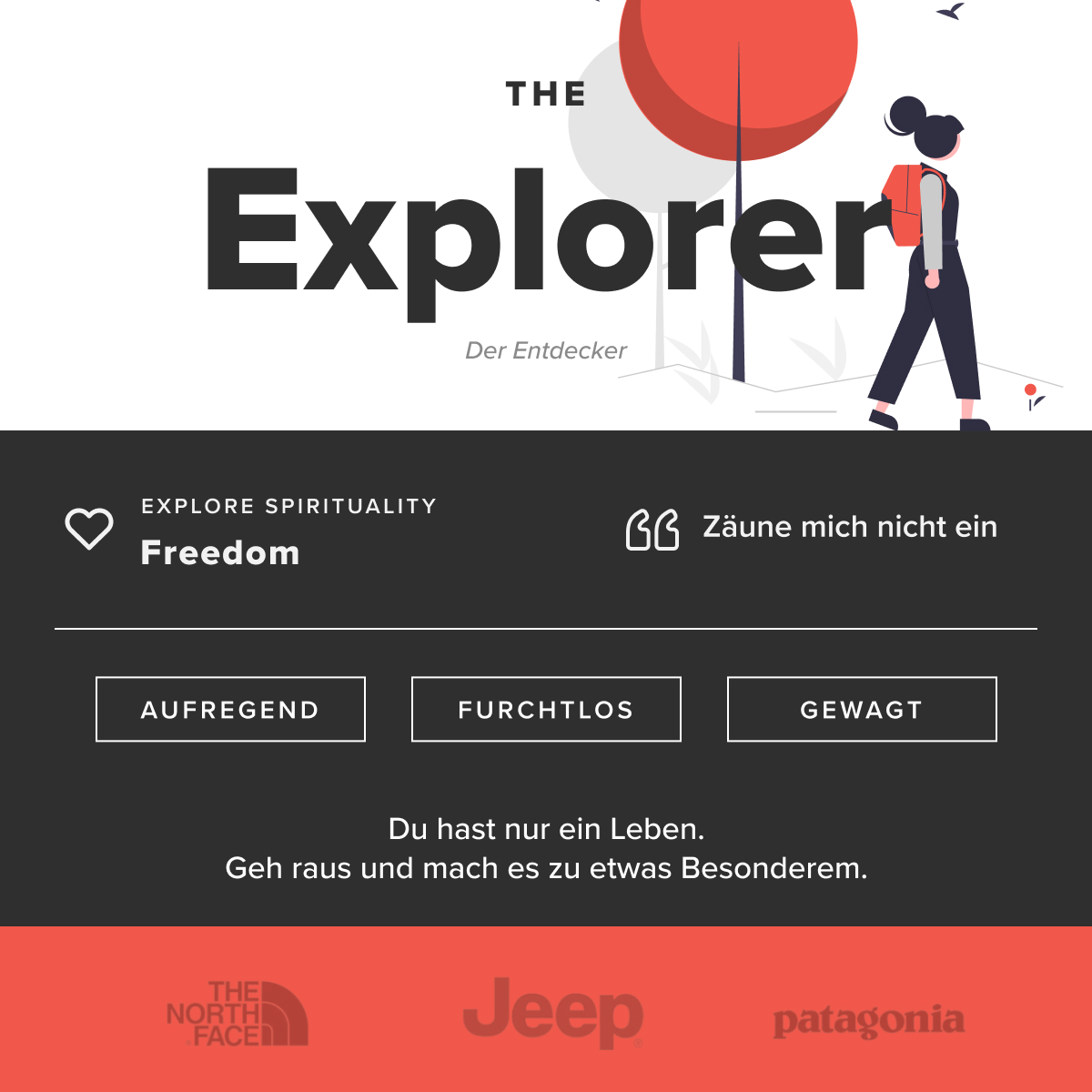
Application in practice
Below are a few very important aspects to consider when creating Brand Archetypes in practice.
Does customer archetype equal brand archetype?
Since archetypes all represent personalities, they are both your customer and your brand.
The trick is to identify your customer’s personality and then align your brand with the archetype that most appeals to your customer’s desires (they are often, but not always, the same).
For example, your target audience might be the “everyman,” but you want your brand to appeal to the “explorer” in him. In this case, your brand should be more aligned with the “explorer” archetype, using their personality and communication to inspire their urge to explore.
A little further down we will look at the strategy.
Pure archetype or mixture?
No doubt you recognize these archetypes, or more accurately, their personalities. But how do you choose which one to apply to your brand?
In your industry, there is often a typical personality that your audience would expect. In the healthcare sector, that would be “The Caregiver,” for example.
While differentiation is key to a strategic brand, communicating to potential healthcare customers as an outlaw or a fool wouldn’t go over well, would it?
This is where the archetypal mix comes into play.
You need a core archetype that is at least 70% of your brand personality (anything less and your personality becomes confusing and you’ll have a hard time connecting with your audience through familiarity).
The other 30% is your influencer archetype left to differentiate. But don’t let that 30% burn a hole in your pocket. Use it when you must, and spend it wisely.
Your core archetype may need to match your industry archetype (depending on the industry). If that’s the case, you’ll need to get creative with your remaining 30%.
If you can go against the grain of your industry with your core archetype (for example, if you’re not a nurse in the healthcare industry), you have a chance to really stand out in your industry.
Remember, you want your brand to stand out, not fit in. If you just jump into a flock of pink-feathered flamingos, we can’t see you, can we?
Fire archetypes test
Get a free Brand Archetype Test emailed directly to you now and learn which archetype your brand is.
Summary
Brand archetypes are not a new concept, but they are underutilized, especially in smaller companies.
That’s refreshing to know. Nowadays, there is not much that is not used.
With so much noise in the marketplace, it’s only the brands that connect on a human level that gain affection.
There is no better way to connect on a human level than with a human personality, and there is no better way to develop a human personality than with the help of an archetypal framework developed to awaken human longings.
Brand archetypes are a tool to help you differentiate your brand, give it a deeper personality, and use it to truly connect with your audience so they feel something for you.
An effective brand story is fascinating and an opportunity to be truly authentic. If your brand has no direction, no identity, and no human connection to your target audience, it won’t appeal to their desires. Figure out what you want your target audience to feel, find the archetype that best appeals to them, and develop a real personality that gives your brand persuasive power. Make sure you know who your brand is, what it stands for, and where it’s going. Brands that know where they want to go inspire people to follow them.
We are happy to help you and your company to build a strong brand as we have done for companies from Graz, Dubai, Vienna and other cities around the world.
